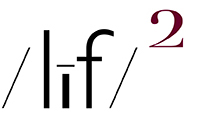all photos (embiggenable)
“Our artist in the Adirondacks has contrived to tell us his own story, in his graphic way, with the pencil camera, and explanation by the pen is therefore hardly necessary.” ~ excerpt from from the Saturday, September 21, 1872, edition of Appleton’s Journal featuring a wood engraving entailed “Our Artist in the Adirondacks”.
MY An Adirondack Survey / in plain sight BODY OF WORK IS APPROACHING the 650 pictures mark. Inasmuch as that number will continue to increase (where it will end, nobody knows) raises several questions. The most obvious one; whether (or not) it is time for some serious editing? Ya know, get the number down to a more “manageable” body of work. Next question; what about providence, aka: making a provision for the future? Ya know, I want the work to pass on after I pass on. After all, it is my magnum opus.
RE: editing? - simple answer: not gonna happen. While the body of work, as it currently exists, could be edited down to a more manageable number of so-called “greatest hits”, that procedure would, for all intents and purposes, dilute–if not completely destroy–the essence of what, iMo, the body of work is about; quotidian life in the Adirondack Park*. Here’s the thing ….
…. if the Adirondack Park were to be a state, it would rank as the 37th largest in the US. Within the blue line–the line drawn in blue to define its borders when the Park was created in 1892–there are 105 towns and villages with approximately 130,000 year-round residents. Yes, the Park is considered to be–and marketed as–an outdoor, natural world playground (with some nice civilized amenities throw in), but the fact is that it is also a place where the residents go about the business of paying the rent of daily living. In other words, it’s a big place with a big story, so to speak.
That written, realistically, I realize that I will most likely have to edit the collection down–for exhibition / book purposes–to approximately 300-400 photographs. FYI, that number will be determined by the number of folio edition photo books I am creating (see below).
RE: providence? - I believe that this body of work is an important collection; nothing like it has ever been undertaken. Fact is, most picture makers, tourist and accomplished locals, make, almost exclusively, pictures of the “grand” outdoors / natural landscape. If you want a picture of the Adirondack natural landscape, they are–or should be–a dime a dozen. ASIDE truth be told, I have sold–with a very hefty price tag–quite of number of that type of picture END ASIDE.
With this body of work, the major challenge for me is to find an art institution that will acquire the body of work. To that end, I will be creating 8-10 photo books (several copies of each), serial folio-edition style, each book containing 30 photographs that I will be circulating to a number of institutions.
Needless to write, I have my work cut out for me.
* An anecdote … early on I showed my first An Adirondack Survey / in plain sight photo book (70 photographs) to a couple I was just introduced to. From the art they had on the walls of their home (we were there for dinner), I judged them to be rather art conscious so I pulled out the book and they, separately, took the time to look through it, front to back. The initial comment from the wife, seconded by her husband, was, for me, quite telling …. she said that they had just returned home from a trip out side the Park and what immediately struck her about the work / book was that it expressed an overwhelming feeling of their recent drive through the Park.
Needless to write, I was delighted to know that they “got it”. And, that was confirmed when they each picked out 1 photo apiece for purchase to hang in their home.
